HTC One max Review - It's Huge
by Brian Klug on October 28, 2013 10:00 AM EST- Posted in
- Smartphones
- HTC
- Mobile
- One
- Snapdragon 600
- Android 4.3
- One max
The performance section is probably a good place to talk about one of the elephants in the room, and that’s the SoC inside the One max. The One max includes a Snapdragon 600 APQ8064T SoC, which consists of 4 Krait 300 cores running at up to 1.7 GHz, and Adreno 320 GPU, all built on TSMC’s 28nm LP process. This is the same SoC that shipped in the original HTC One, and the same 1.7 GHz bin as well. There have been three major variants or families of APQ8064(T) to date. There first was the option for the earliest 1.5 GHz Snapdragon S4 Pro version (AA suffix), the 1.7 GHz “8064T/Pro” variant in the HTC One and One max (AB suffix) which began the Snapdragon 600 branding, and finally the 1.9 GHz CPU and 450 MHz GPU variant we first saw in the SGS4 (AC suffix). Qualcomm usually has a number of revisions of its silicon, and with APQ8064 we saw quite a few. As an aside, expect similar with 8974 or Snapdragon 800.
There’s nothing wrong with the 1.7 GHz Snapdragon 600 variant, it was and still is a great performer, but the reality is that HTC falls behind on its hardware platform with the One max by not going to Snapdragon 800 (MSM8974) like the rest of the competition (Note 3, ASUS Padfone Infinity 2014, LG G2, Nexus 5, and so on). So much of the SoC performance and power story right now is gated by process, and 8974 moves to TSMC’s high-k metal gate 28nm HPM process which affords some clock headroom (up to 2.3 GHz) and lower power consumption at lower performance states for Krait 400 (which is essentially 300 implemented on that new process). 8974 also brings a beefier Adreno 330 GPU with more ALUs and higher clocks, in addition to the new modem IP block, but I won’t go over all of that.
It’s pretty obvious to me that the One max stays with the same SoC used in the original One for a few reasons which ultimately boil down to cost and margin. It obviously means HTC can share the same SoC between the One and One max, and since it’s later in APQ8064’s lifespan I would suspect HTC was able to secure good pricing for it. Having closer shared hardware platform means about the same software stack on top of it, and the same source tree from Qualcomm (BSP) for building and testing ROMs. This makes the software maintenance and update costs lower for the One max. I won’t speculate too much beyond that, but I wouldn’t be surprised if the One max started out an 8974 device but later became an 8064 device, given its timing.
| I Can't Believe I Have to Regularly Update This Table | |||||||||||
| Device | SoC | Cheats In | |||||||||
| 3DM | AnTuTu | AndEBench | Basemark X | Geekbench 3 | GFXB 2.7 | Vellamo | |||||
| ASUS Padfone Infinity | Qualcomm Snapdragon 800 | N | Y | N | N | N | N | Y | |||
| HTC One | Qualcomm Snapdragon 600 | Y | Y | N | N | N | Y | Y | |||
| HTC One mini | Qualcomm Snapdragon 400 | Y | Y | N | N | N | Y | Y | |||
| HTC One max | Qualcomm Snapdragon 600 | Y | Y | N | N | N | Y | Y | |||
| LG G2 | Qualcomm Snapdragon 800 | N | Y | N | N | N | N | Y | |||
| Moto RAZR i | Intel Atom Z2460 | N | N | N | N | N | N | N | |||
| Moto X | Qualcomm Snapdragon S4 Pro | N | N | N | N | N | N | N | |||
| Nexus 4 | Qualcomm APQ8064 | N | N | N | N | N | N | N | |||
| Nexus 7 | Qualcomm Snapdragon 600 | N | N | N | N | N | N | N | |||
| Samsung Galaxy S 4 | Qualcomm Snapdragon 600 | N | Y | Y | N | N | N | Y | |||
| Samsung Galaxy Note 3 | Qualcomm Snapdragon 800 | Y | Y | Y | Y | Y | N | Y | |||
| Samsung Galaxy Tab 3 10.1 | Intel Atom Z2560 | N | Y | Y | N | N | N | N | |||
| Samsung Galaxy Note 10.1 (2014 Edition) | Samsung Exynos 5420 | Y(1.4) | Y(1.4) | Y(1.4) | Y(1.4) | Y(1.4) | N | Y(1.9) | |||
| NVIDIA Shield | Tegra 4 | N | N | N | N | N | N | N | |||
The HTC One max, like a ton of other devices, continues to employ a CPU optimization “boost” feature which plugs in all the CPU cores and increases clocks to their maximum upon detection of certain benchmarks. It’s sad that this needs to be a regular disclosure for each handset release, since the narrative will likely be the same for the near future, but yes the One max does this.
Given product development cycles and how long it takes software in the Android landscape to make it through the chain from internal OEM testing to operator test approval and finally hitting devices, I expect we’ll see a pipeline of devices with this “feature” enabled for a while before it changes, even if we could change every OEM’s mind about it right now. I’m starting to understand more about the origin of these optimizations, the list of APKs they detect and boost for, and what party is ultimately responsible, but that’s a story for another day.
CPU
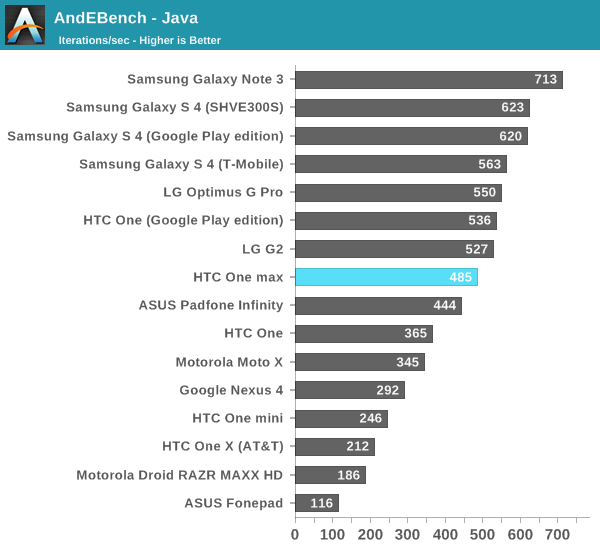
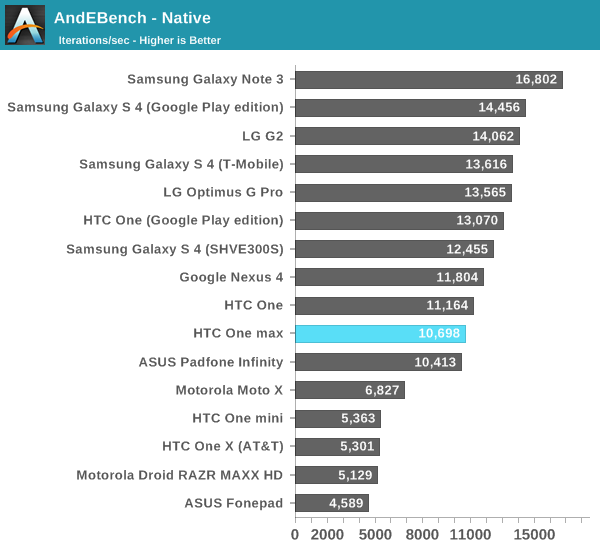
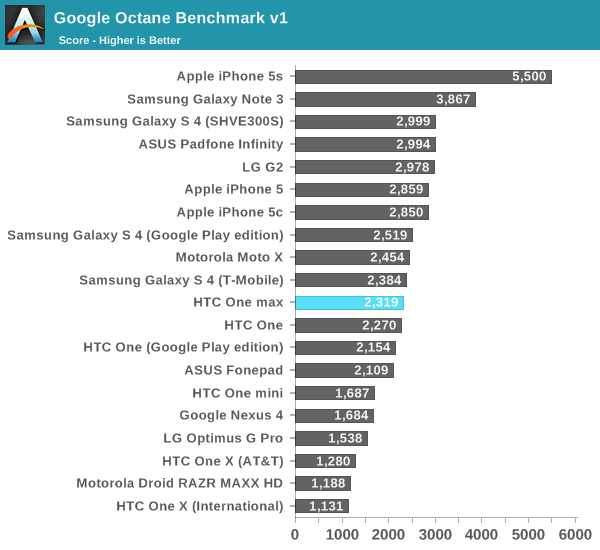
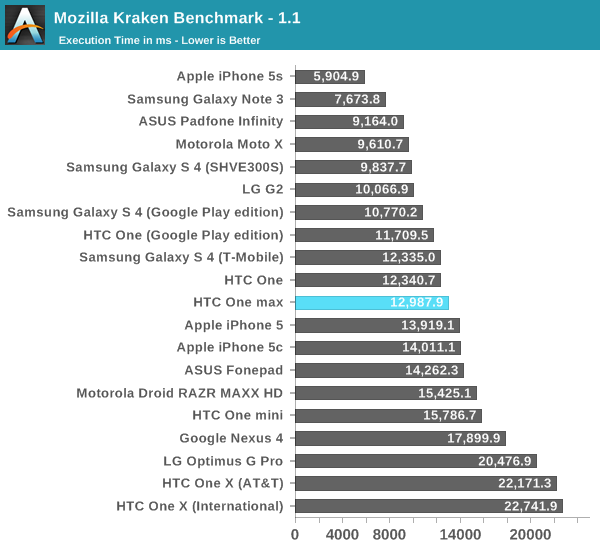
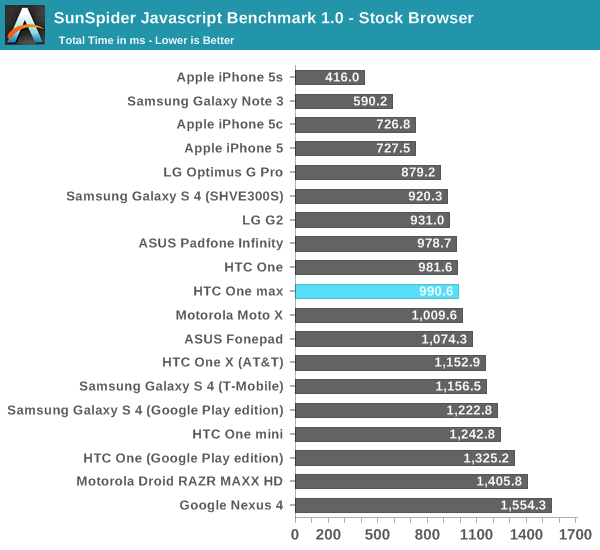
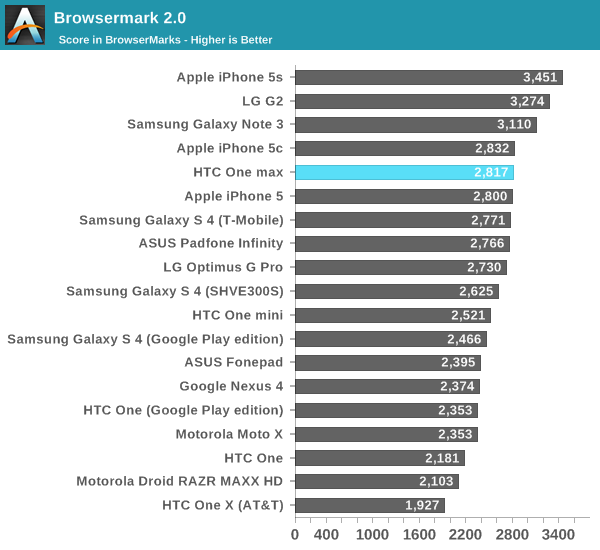
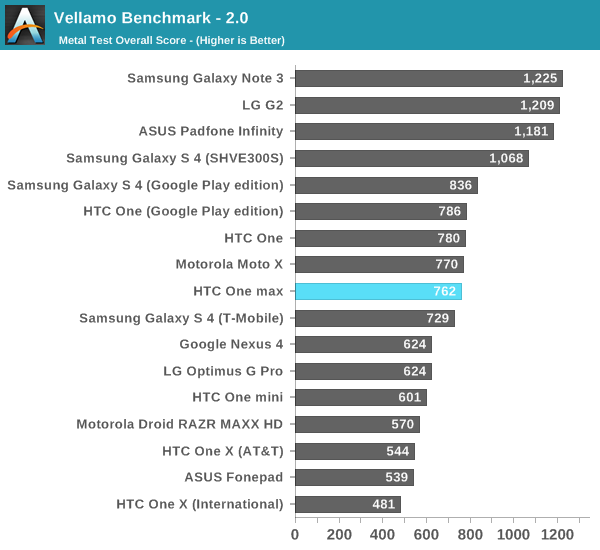
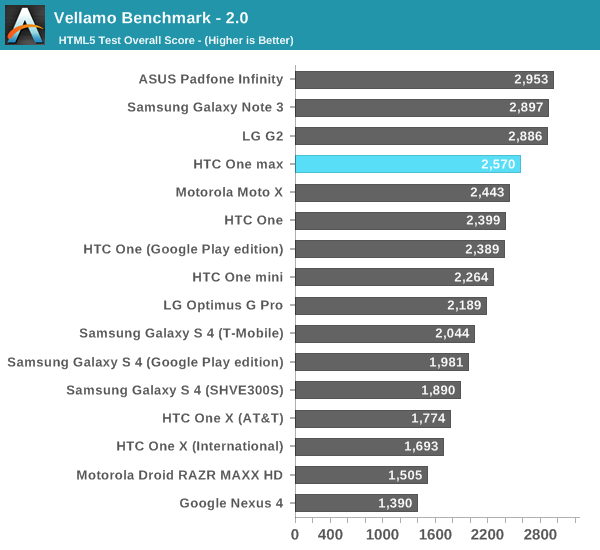
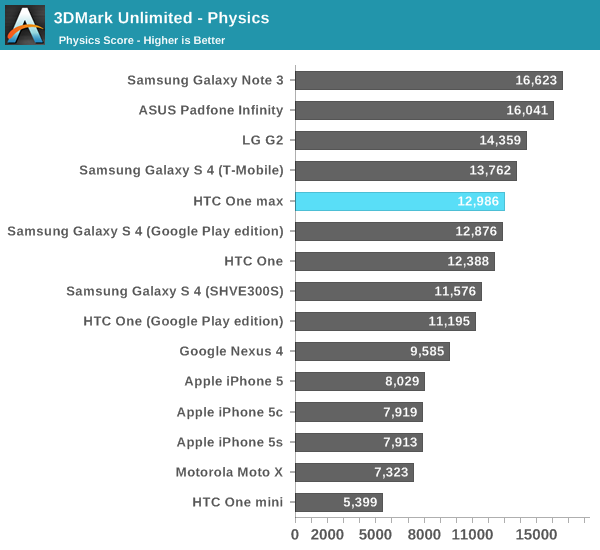
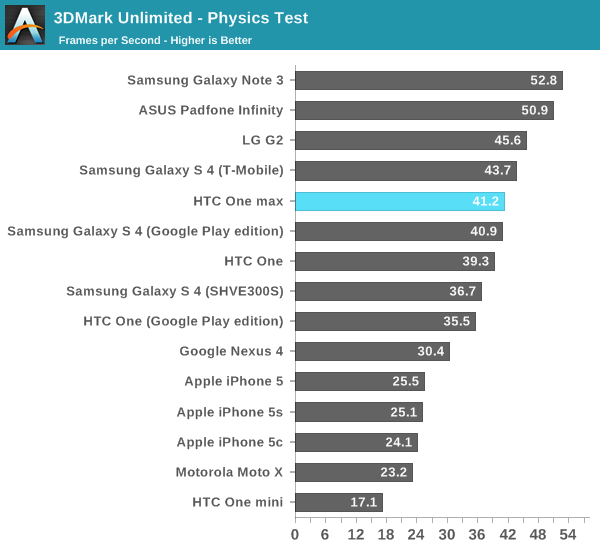
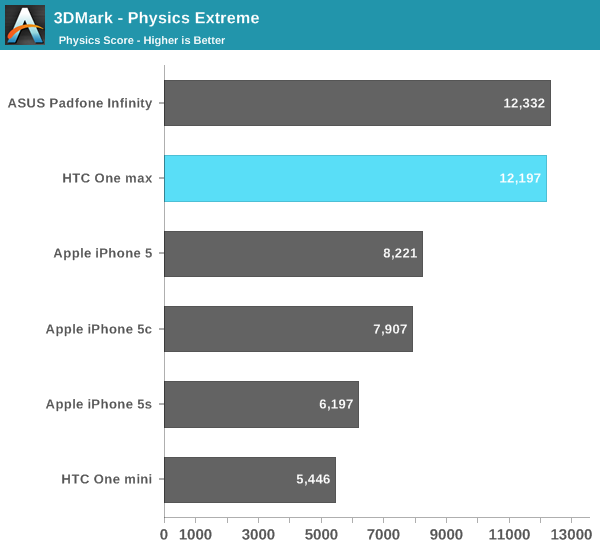
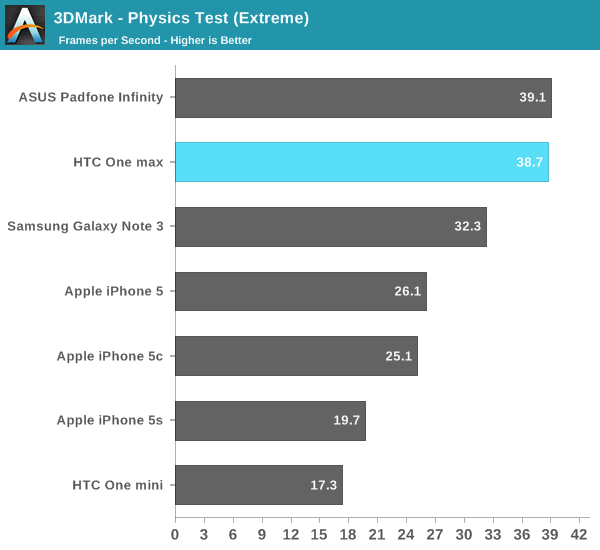
GPU
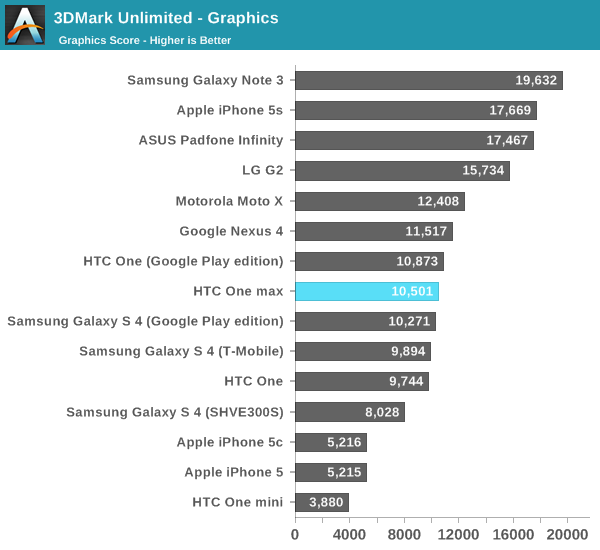
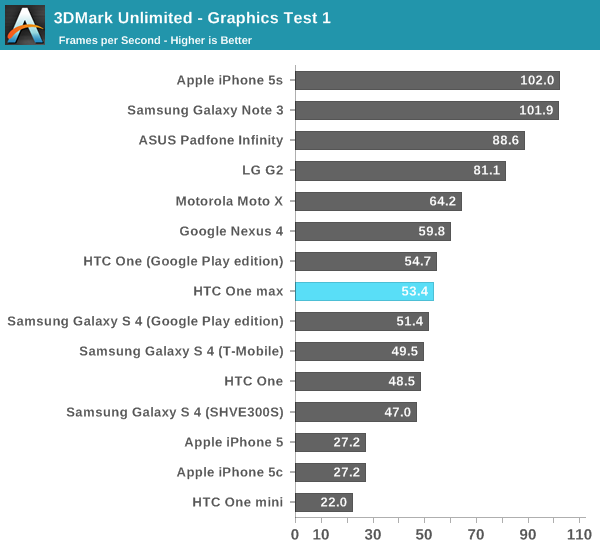
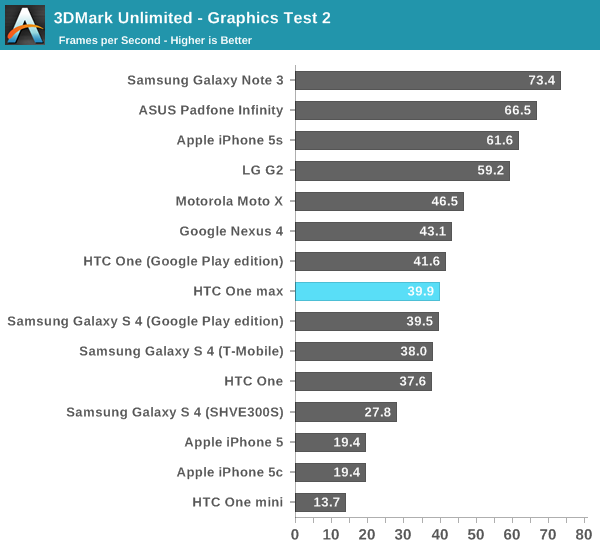
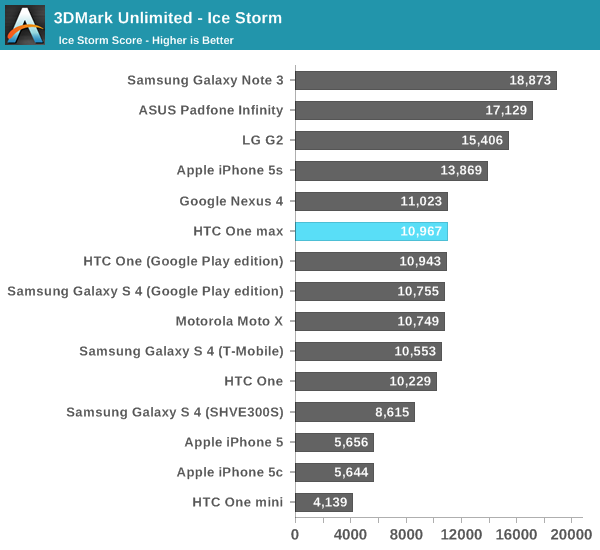
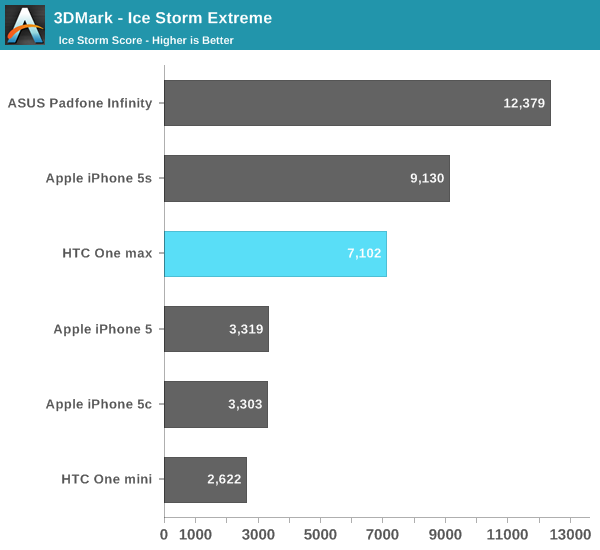
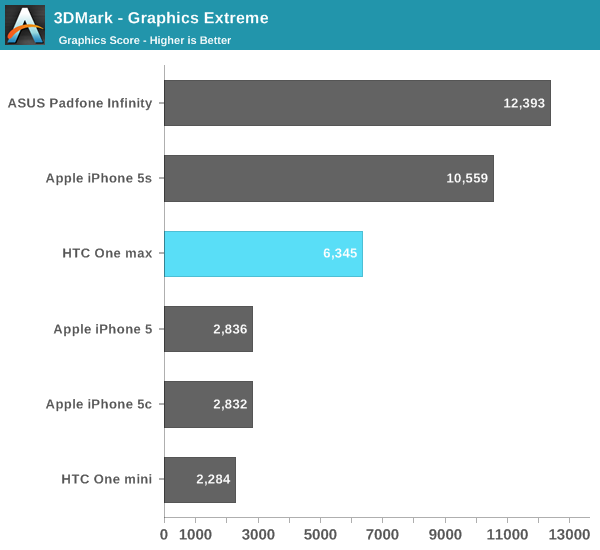
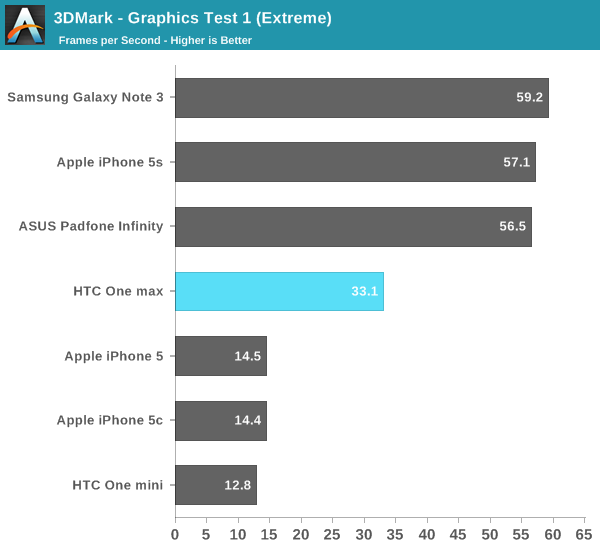
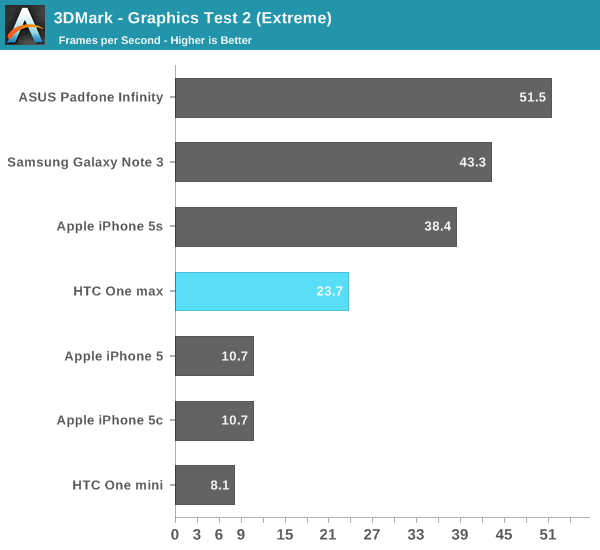
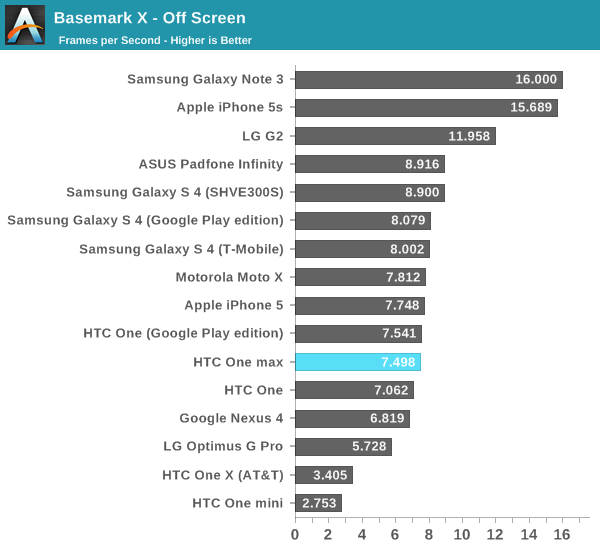
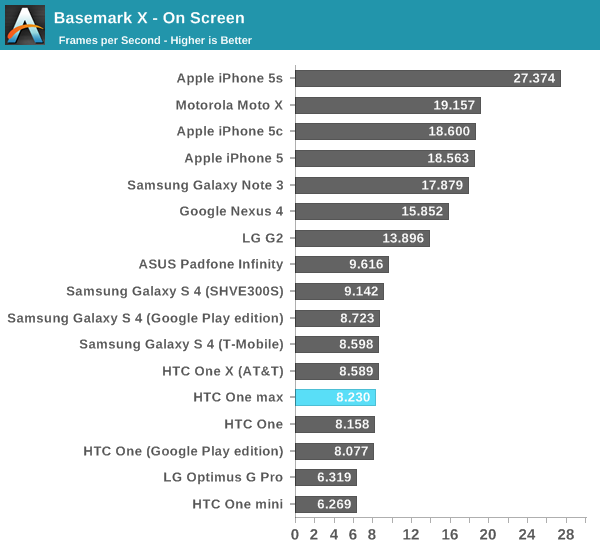
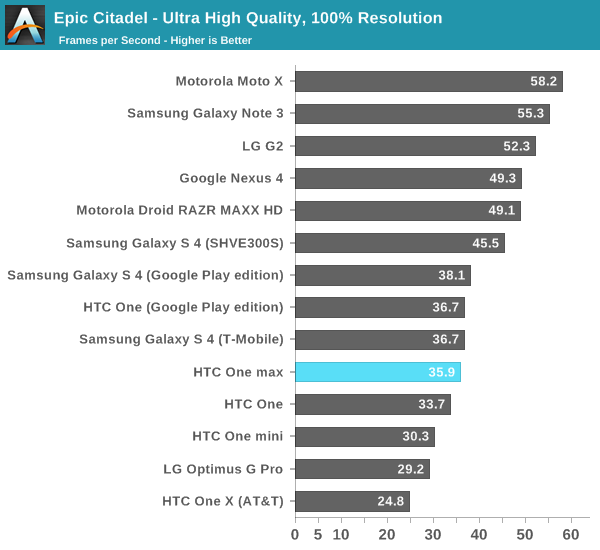
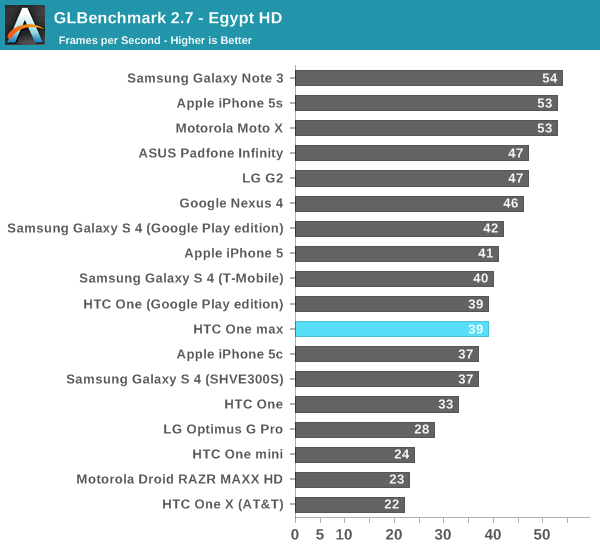
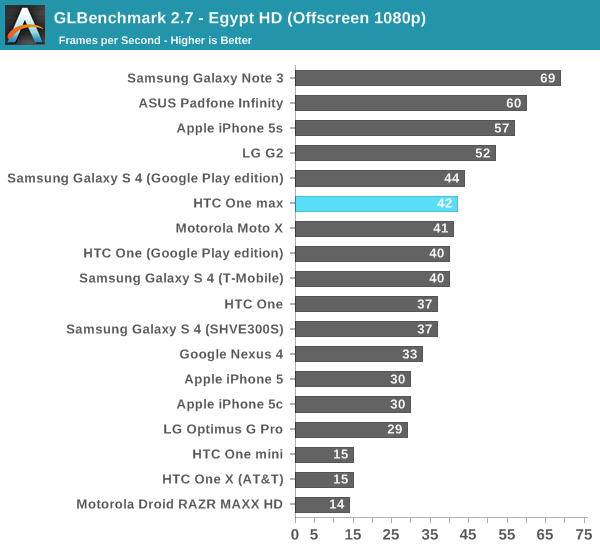
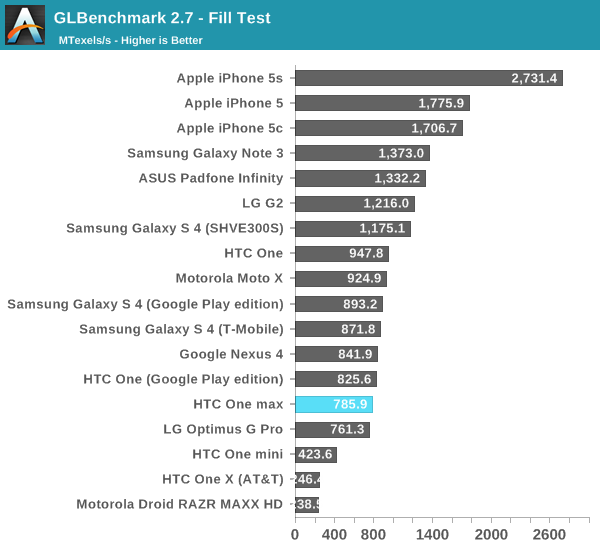

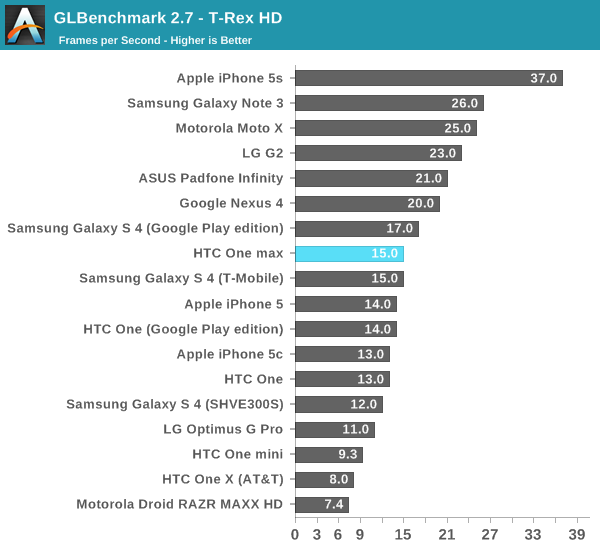
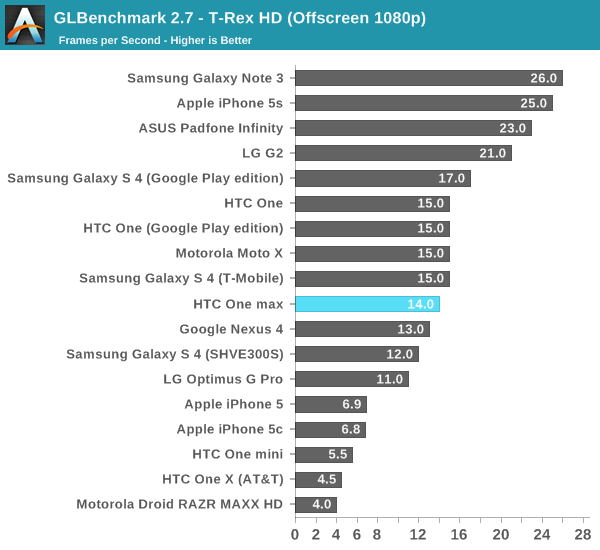
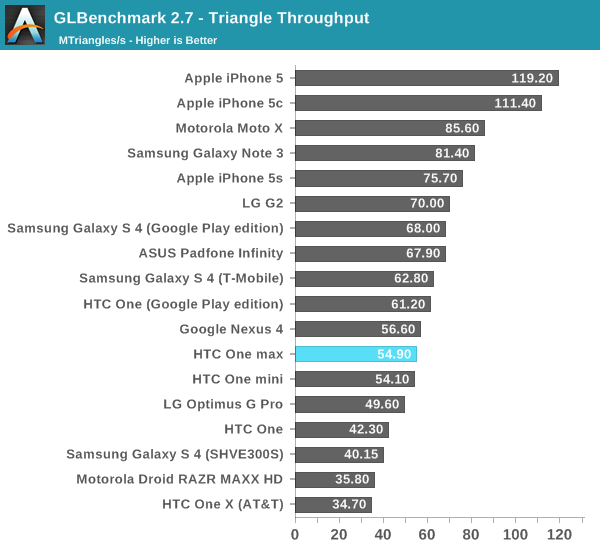
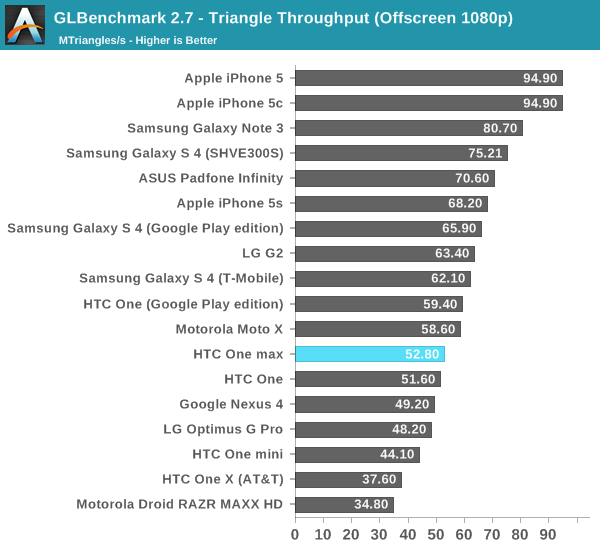
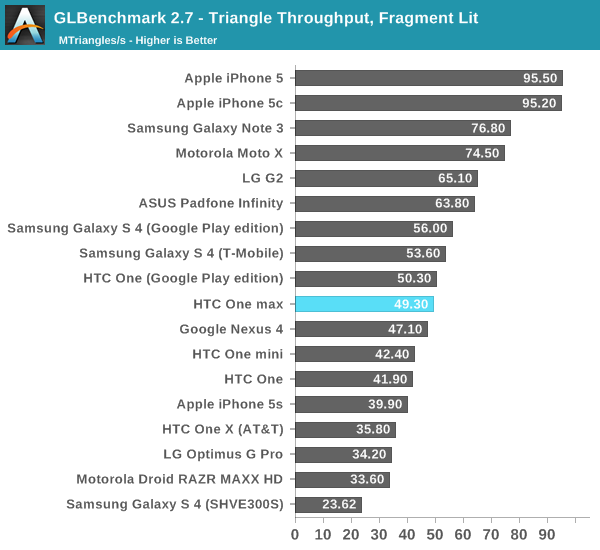
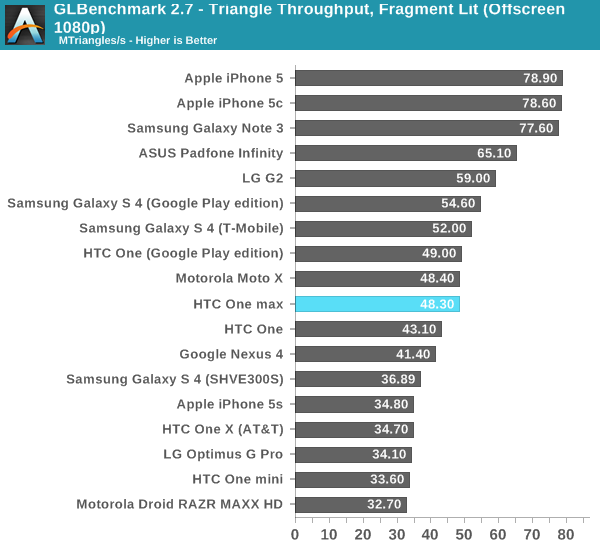
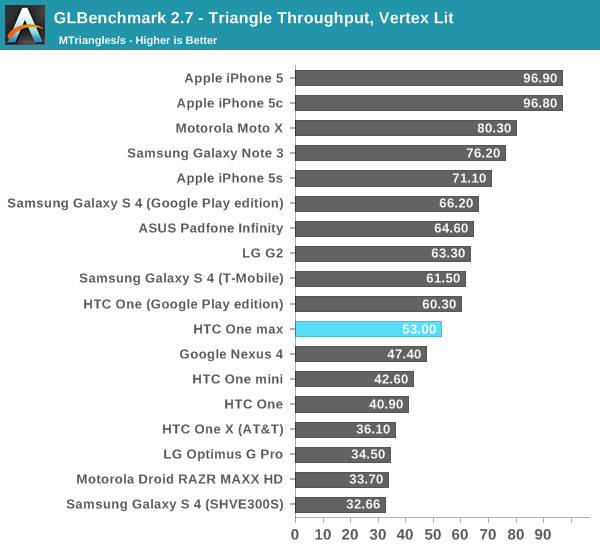
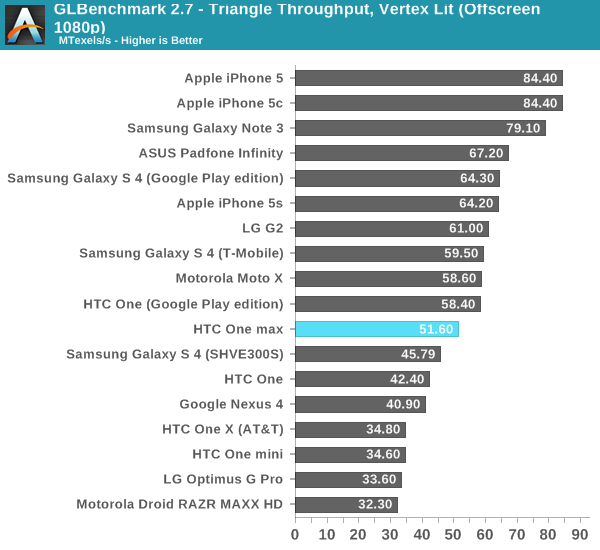
Storage
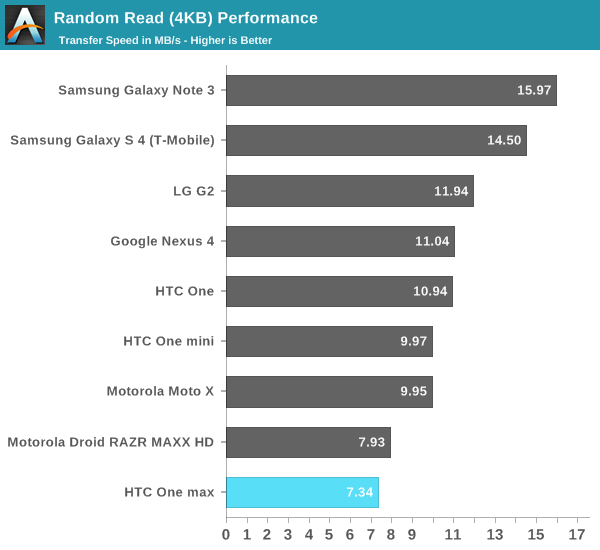
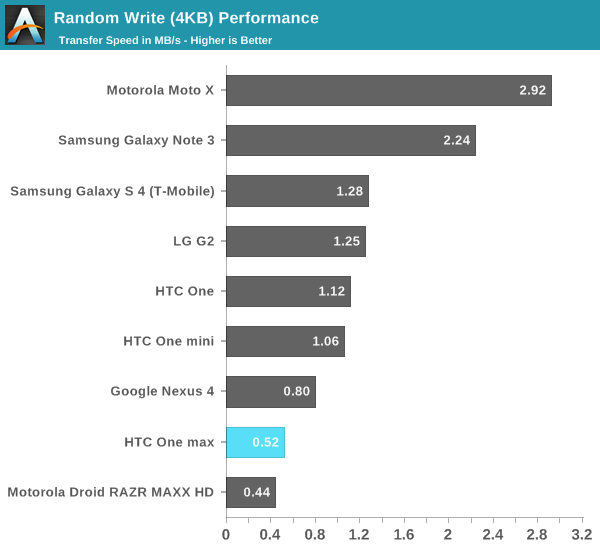
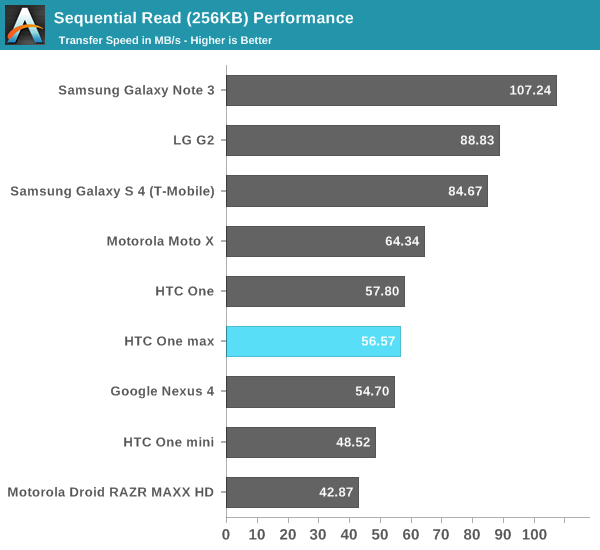
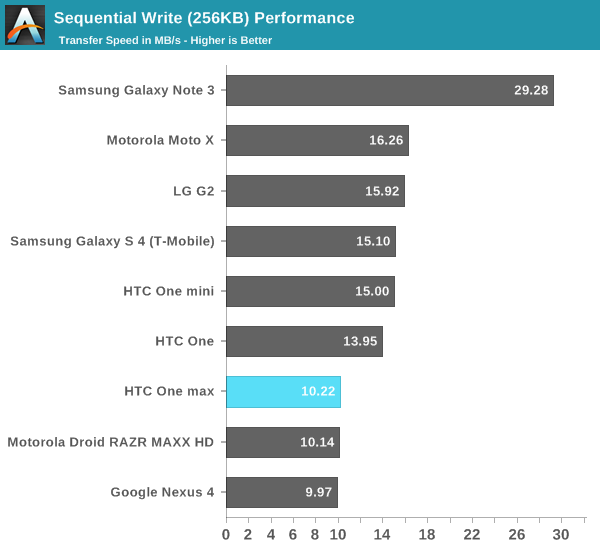
I’m not going to go through all the benchmark results on the One max since again it’s the 1.7 GHz Snapdragon 600 SoC we’re very familiar with at this point. The only oddity is storage performance, where the One max trails in random writes and reads, I'd attribute this to a different eMMC being used. The rest of the results are essentially within the margin of error. I initially suspected that the One max might have a bit more thermal headroom than the One, but this doesn't really seem to play itself out in the results, possibly due to the removable back door.


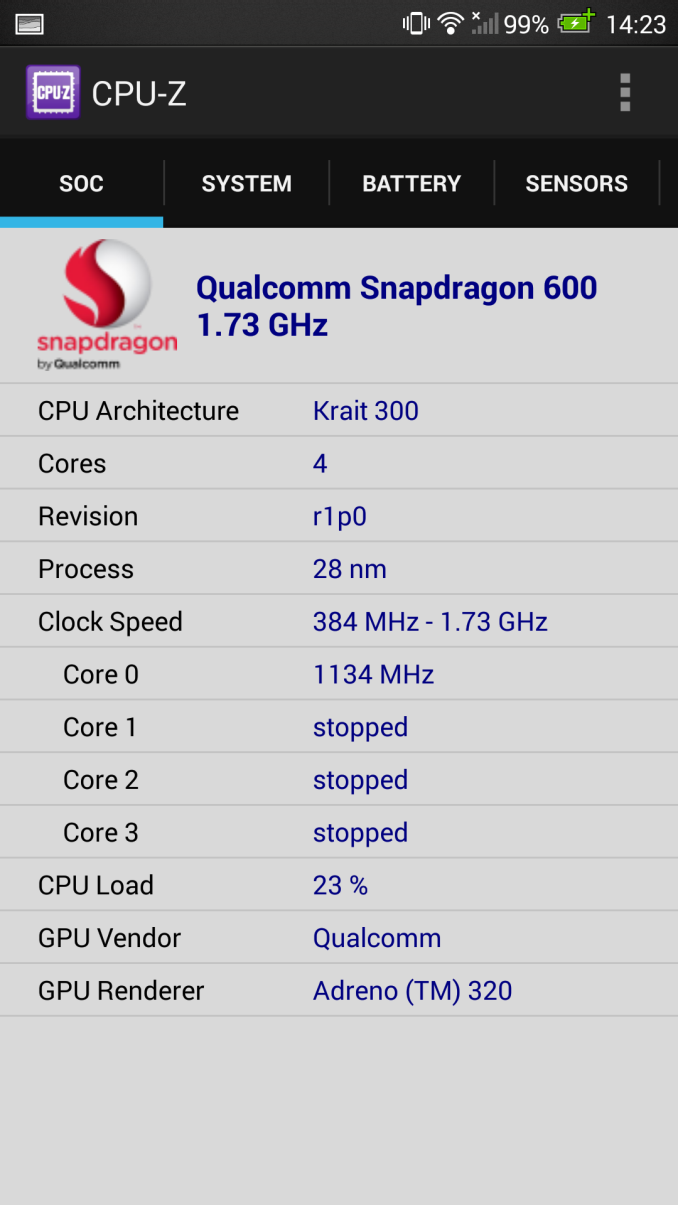
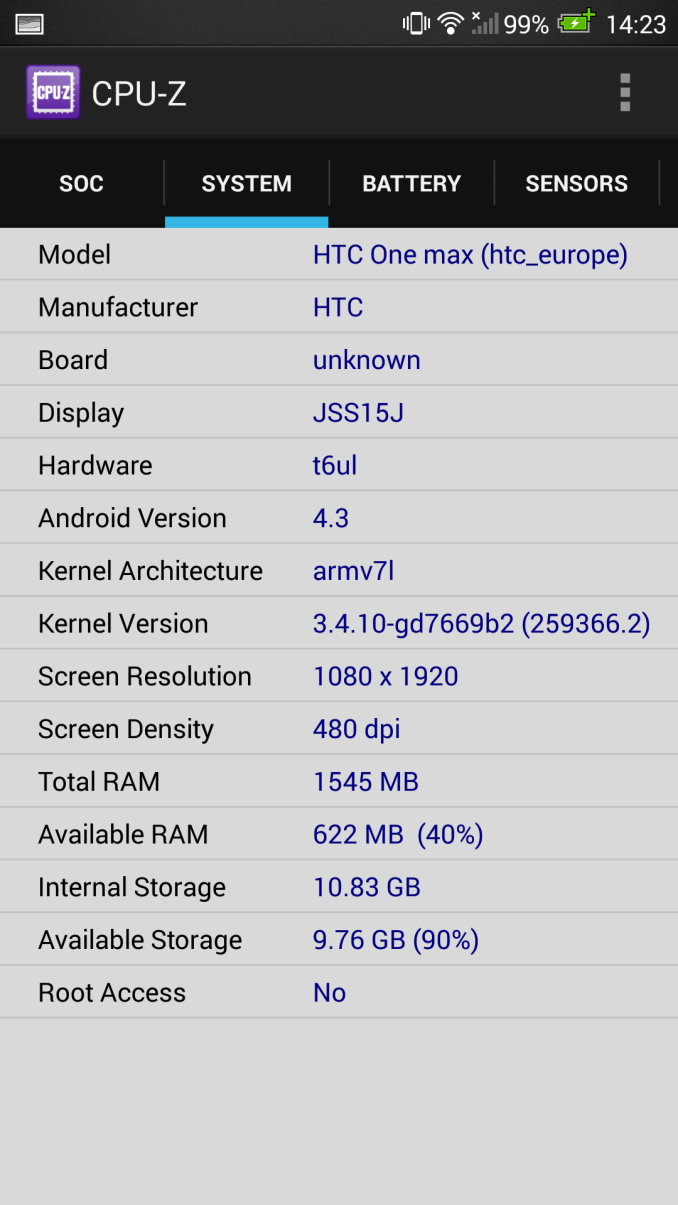








197 Comments
View All Comments
Tegeril - Friday, November 1, 2013 - link
I love the way that his opinion (that's a component of reviews) that build quality suffers when SD cards are involved (particularly in the context of *this* device) is not valid but yours is?Spunjji - Thursday, November 28, 2013 - link
The point is that neither is more valid, but Brian's claiming his is. Ta-daaa!bairlangga - Monday, October 28, 2013 - link
Dear Brian,Other manufacturer had the solution towards the door and build quality tradeoffs, it is called sd card slot with flap. Pretty please do a review on Xperias line.
chizow - Monday, October 28, 2013 - link
I've read most of them and still find them off-base. Your arguments about a small demographic are based on what? The entire smartphone market? Honestly, this means about as much as Nokia claiming they held the majority of the cell phone market up until a few years ago, it means very little out of context. It's all about what part of the market you are targeting, for flagship phones and high-end power users, features like microSD and changeable batteries make all the difference that can be a deciding factor in which phone to purchase.Similarly, people who care about aluminum unibody construction are a vast minority, imo, when all I see are people obscuring these case materials in protective cases made of polycarbonate or rubber.
In any case, it is good to see phone makers like HTC One are not taking your opinion as gospel, and instead, listening to their customers in deciding their hardware approaches. It is clear to me that HTC saw how the One was losing to the S4, despite positive reviews declaring the One superior in many categories only to lose in sales due to features like microSD, removable battery, 802.11AC. Coincidentally, I just named the 3 big reasons I bought an S4 instead of the One a few months ago. I fully expect the next iteration to follow the One Max and offer a microSD and removable battery, but we shall see.
rituraj - Wednesday, October 30, 2013 - link
May be HTC were stupid that they had to open the entire phone's back to put that microsd card. What about a slot from the sides. I believe a phone this big has quite a long side. I guess quantum geometry supports me. But yeah, that 1cm slot will destroy the build quality too just like the sim card does.Samwise - Monday, October 28, 2013 - link
Anandtech, please include the Droid MAXX in you battery life comparisons. Thank you.tuxRoller - Monday, October 28, 2013 - link
Why don't you have the iDevices storage benched?VengenceIsMineX - Monday, October 28, 2013 - link
Pretty disappointing product really. No OIS, lesser SOC, and nothing really innovative or even a great price. I'm in the market to optimize down to 1 device from a phone & small tablet to just a phablet but I don't think I'll bother considering the HTC compared to either the Sony or the Lumia 1520.sherlockwing - Monday, October 28, 2013 - link
The lack of S800 and OIS are very disappointing, to add the SD slot but not the S800 SOC to enable UHS-I speed for SD card is pretty silly.mregan - Monday, October 28, 2013 - link
Brian,Did you notice the problem that Zoes included in a highlight video now only show 1 second of motion and then freeze? I've seen that on my One when I upgraded to 4.3 and others have reported the same issue. It really seems like a bug. The highlights become much more static. All the other highlight changes are great but this is a step backward.
Mike R